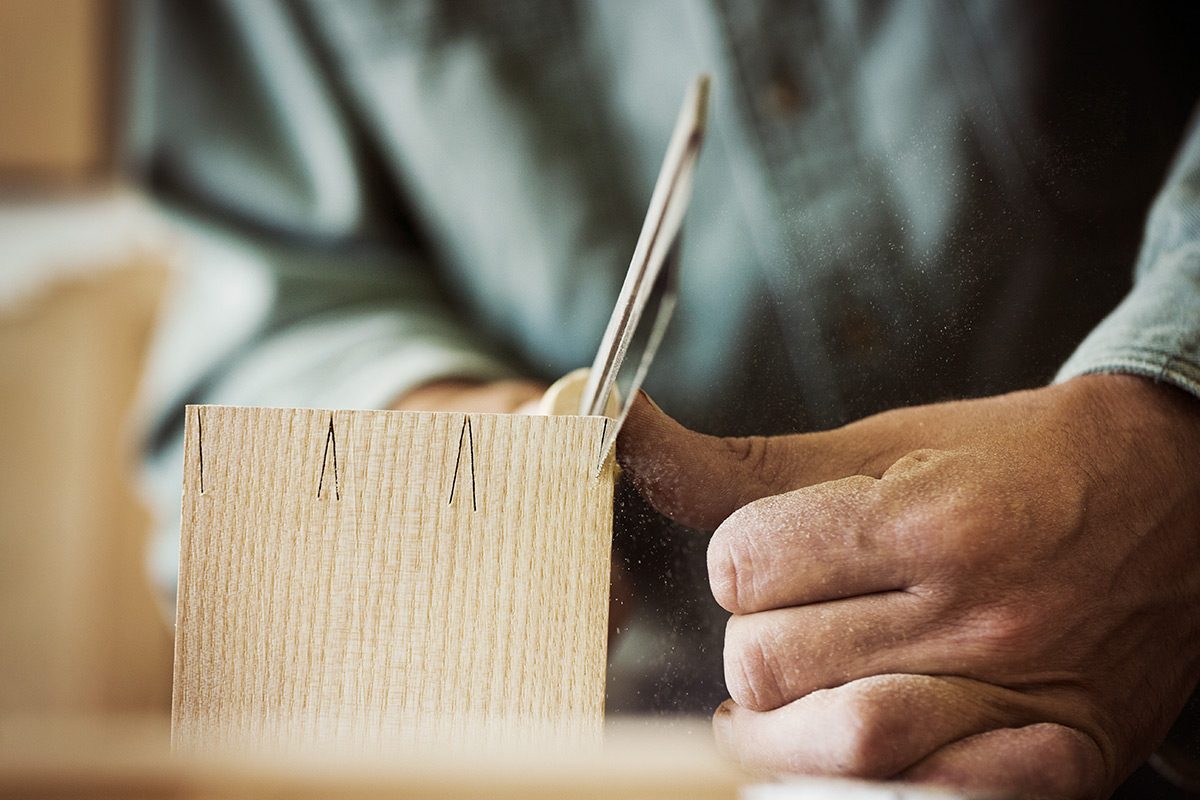Dovetail joints are most commonly found on the fronts of drawers, where they are used to connect them together. Pins protrude from one of the boards and attach to tails cut into the opposite board’s end. The dovetail joint will be exceedingly durable and resistant to separation. This is because there are trapezoidal-shaped pins and tails that take on a permanent hold after it has been bonded. Nails will no longer be required. Because precision cutting is required, this form of joint may be too difficult for a beginner.
Pros and Cons of Dowel Joints
Screws, staples, and nails are not required with dowel joints. This not only eliminates the risk of injury when working with hardware, but it also gives the item a more polished appearance because the grain pattern is not disrupted.
Pros of Dowel Joints
- Dowling is a simple procedure.
- It aids in the completion of a neat job.
- Screws, nails, and other tools are not required.
- When it comes to woodworking, dowel joints are the most durable, especially when numerous rows of dowels are used.
- Dowels aid in the creation of robust joints that are simple to construct at home.
Cons of Dowel Joints
- Misalignment Of Joints Dowel Shearing Weaker Joint No Face To Face Grain Contact Replacement Drawer Box Page Divder
Advantages of Mortise and Tenon Joints
Mortise and Tenon is a type of corner junction that is commonly employed in the construction of doors, tables, windows, and beds. A Mortise cut is a rectangular groove that is cut into the (precise) center of the end piece of wood to accept the protuberance fitting (the Tenon), resulting in a clean, sturdy union. The wood joints will not move when they have been bonded and securely fitted, and they will be extremely difficult to separate. To ensure that the mortise is exactly one-third the thickness of the wood, precise measurements must be taken. This will prevent the mortise from splitting and the tenon from breaking.
Pros and Cons of Finger Joints
- Page for Replacement Drawer Boxes Pros of Divider Finger Joints
- Straightens the joint
- Less wood is wasted in the manufacturing process, which saves money. It’s also more durable for vertical loads.
- Adhesives can be used to make a stronger mortise and tenon junction.
- Cons of Finger Joints
- It’s more difficult to get a smooth wall if it’s crooked.
Pros and Cons of Bridle Joints
Bridle joints are identical to mortise and tenon joints, except that the tenon and other members are cut to fit together. These are commonly used to attach rails, legs, and stiles in frames.
Pros of Bridle Joints
- A more straightforward alternative to the mortise and tenon joint.
- Can shape joint assembly without sacrificing strength, which is ideal for building small frames.
- Cutting one of the most basic joints
- It is not necessary to use a mortising machine.
- Cons of Bridle Joint
- End grain is visible, making it less appealing.
Pros and Cons of Rebate Joints
In woodworking, a rebate junction is similar to a butt joint. The most significant difference between the two is a groove carved into one of the ends that improves holding strength. When a simple joint is desired, but strength is required, it is most usually used. It’s frequently utilized in cabinetry and other woodworking tasks. To strengthen the strength of load bearing joints, dowels, screws, or nails can be used in some circumstances. A rebate joint’s surfaces are usually large enough that timber blocks aren’t required.
Pros and Cons of Tongue and Groove Joints
When linking a wood edge to another wood edge, such as when creating a tabletop, laminating a floor, or connecting hardwood or paneling, you’ll require a tongue and grove joint. To accept the tongue cut that goes down the edge of the adjoining piece, the full length of one piece must be slotted or grooved. The boards will be pulled together (without applying any lateral pressure) and will remain in this position. Glue may or may not be required depending on the product. If you utilize a router with a depth setting capability, it is easier to measure and make Tongue and Groove joints.
Drawer Boxes
If you’re looking for the best quality cabinet drawer boxes at the best prices there isn’t a better source than Drawer Connection. We give you your choice of wood and only source the highest quality raw materials. All of our fabrication is high precision and made to last. Whether you’re choosing a solid wood with a dovetail joint or a melamine with a dowel joint, every single drawer box is built to last!







